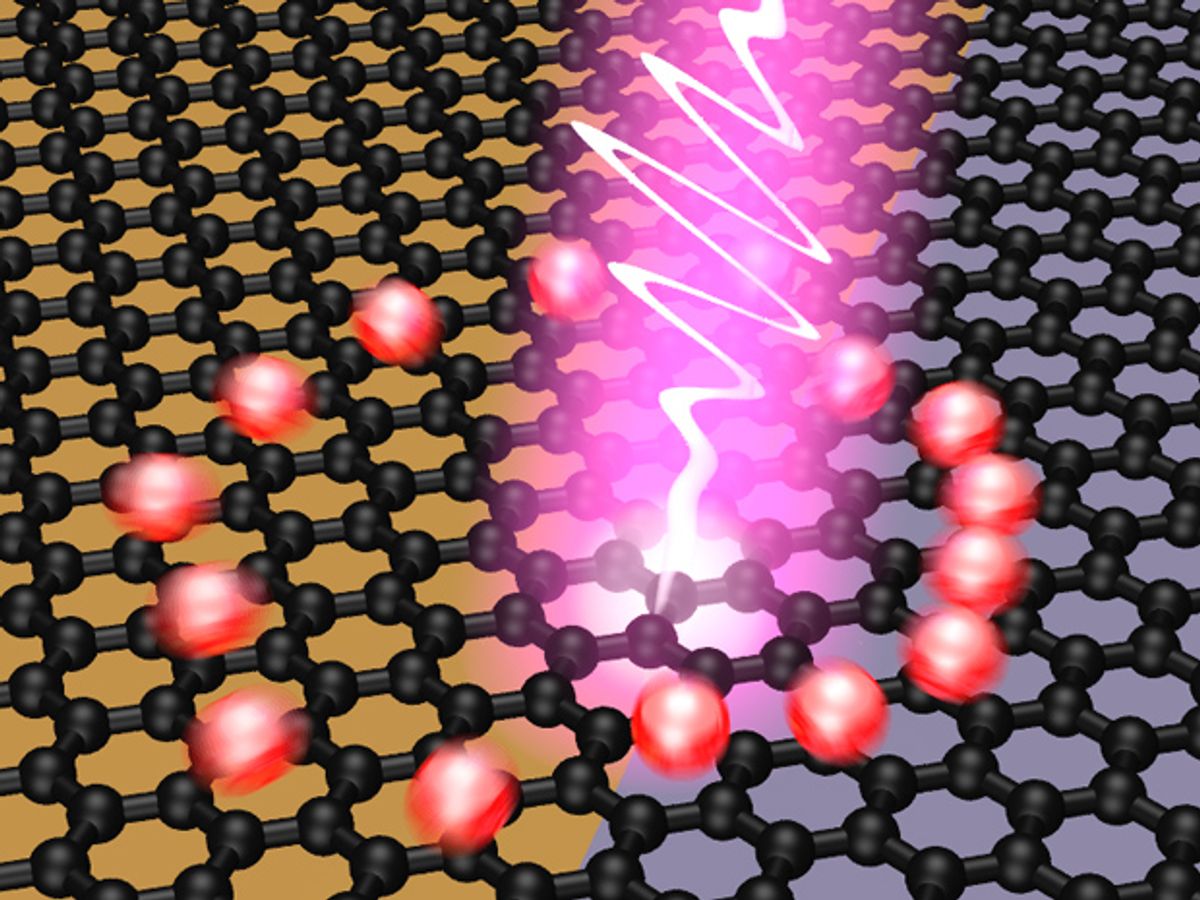Researchers at the Institute of Photonic Sciences (ICFO) in Barcelona, Spain have been at the forefront of exploiting graphene’s optoelectronic capabilities.
The latest research out of ICFO has demonstrated a graphene-based ultrafast photodetector that can convert absorbed light into an electrical voltage at speeds of less than 50 femtoseconds. How fast is that? A femtosecond is a thousandth of a millionth of a millionth of a second. So fast—ultrafast.
In research published in the journal Nature Nanotechnology, the ICFO team addressed the niggling issue in graphene-based photothermoelectric devices, specifically charge carrier cooling times, which has limited their switching speeds.
The photothermoelectric effect occurs in graphene when light is focused on the interface between graphene layers that have been doped differently. Light causes an excitation leading to the generation of electron-hole pairs and a photovoltage.
After the electron-hole pairs are generated, the electrons heat up from being scattered between the charge carriers. Finally, the electrons cool. Typically in photothermoelectric devices this cooling time for the conversion of light to an electric voltage occurs in picoseconds, limiting their switching rates to a few hundred gigahertz.
In fact, last year, with great fan fare, the fastest photon switch was measured at 500 gigahertz. Now with this latest research having shortened the cooling times from picoseconds to femtoseconds, the potential for terahertz switching speeds appears to be within the grasp of graphene-based photodetectors.
The key property of graphene that allows this faster electron cooling is the efficient interaction between all its conduction band carriers. This results in the very rapid creation of an electron distribution in the material, resulting in a higher electron temperature. This higher electron temperature means that when light hits graphene it is very rapidly changed into electron heat. That “electron heat is converted into a voltage” according to the press release, and the whole process is nearly instantaneous in graphene.
“Graphene photodetectors show fascinating performance and properties, enabling a wide range of applications,” said Frank Koppens of ICFO in an article published by the Graphene Flagship. “Ranging from multi-spectral imaging to ultra-fast communications, such applications are being actively developed within the Graphene Flagship programme.”
Dexter Johnson is a contributing editor at IEEE Spectrum, with a focus on nanotechnology.



